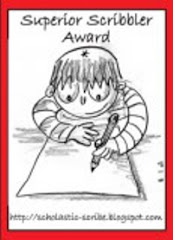I'm a pain in the ass.
(Some of you who know me well are nodding your heads. God, I love you.)
I was realizing this pain-in-the-assery last night when I pulled out my big, blue binder labeled "POLICE FILES."
I started this binder in the year 2000, I think, when I was doing research for my book. I have copies of police radio room transmittals from December 9th, 1981-- the night Mumia Abu-Jamal blew Daniel Faulkner's brains out on the sidewalk. These copies of the radio calls for that night were, by a strange coincidence, submitted by the radio room supervisor to my step great uncle, who was a Staff Inspector in the department in those days. I also have copies of witness statements from that night, diagrams of the crime scene, and microfiche copies of New York Times articles of other police murders, again used in my book.
There are also pamphlets and prayer cards from the dozen-or-so police funerals and viewings that I have attended since I was twenty.
The aforementioned material doesn't make me a pain-in-the-ass, it just makes me weird.
What makes me a pain-in-the-ass are the letters.
They're letters that I have received in reply to pain-in-the-ass letters I wrote. I have letters from:
Office of Prime Minister John Majors
Office of the Mayor of New York City
Parole Board of England & Wales
New York State Board of Parole (at least five)
Citizens Outraged at Police Being Shot (COP-SHOT)
MTA Division of Bridges and Tunnels
Pennsylvania Bar Association
Philadelphia District Attorney's Office
Camden County Prosecutor's Office
Fairmont Park Commission
Oh, and... lots others. These are just the ones I can remember off the top of my head. Most of them concern blocking upcoming paroles. Some concern other things, but all relating to the same thing: pain-in-the-assery.
One day, a slain New York City patrolman's daughter got in touch with me. Her father had been killed by four shots to his back on May 21st, 1971. He was black, patrolling the streets of Harlem with his white partner, who was also killed-- felled by thirteen shots to his back. The precinct where they worked honored the two men by planting two trees outside the stationhouse and adorning each tree with a plaque. Over the years and decades, and due to some construction outside the precinct, the black patrolman's plaque had become disturbed. She had tried to get the department to fix it, but they were slow to do anything about it-- so she got in touch with me.
Being a pain-in-the-ass, I immediately shot off a stern letter to the commanding officer of the precinct house. I wrote that "it sends a very poor message to the people of Harlem that the plaque of a black officer who died next to a white officer is left to languish and the white officer's plaque is just fine. These two men saw each other as equals in life, and that is how they should be treated in death." I was a junior in college at the time. I can remember being in the theatre building rehearsing for an acting class when I called my apartment to get my voicemails (that's how we did it in those days) and there was a phone call from this Captain. I called him back, and he was very apologetic. The black patrolman's plaque would be immediately restored to its former state.
A similar situation arose in Philadelphia. In 1970, a police officer named Frank Von Colln was sitting at his desk in the Cobbs Creek Guard House when two men walked in and shot him five times. Von Colln's revolver was sitting in his desk drawer. A park on the Ben Franklin Boulevard was named for Von Colln and, again, the weather takes its toll on these things. Passing by the sign one day in 2002, I noticed it all broken up and decaying. So I wrote a letter to the Parks Commission. For good measure, I paper-clipped a photograph of Von Colln's bloody body, lying next to his desk that I had found in an old newspaper article.
"That should make these fucking people pay attention," I said as I slapped on the stamp.
A month later, there was a brand-new sign up.
As I was leafing through these flimsy envelopes of my past and, strangely, my present, I tried to remember what my first act of pain-in-the-assery was. You may call it activism, but I like pain-in-the-assery better. Activists, in my mind, wear Peace sign t-shirts and dredlocks. They march and shout into bullhorns and chain themselves to things and have sit-ins and lie-ins and die-ins. I'm no activist; I'm just a firm believer in pain-in-the-assery.
I think my first act of pain-in-the-assery occured in 1994. It was Monday, April 25th. Richard M. Nixon, the only U.S. president forced from office, had died over the weekend. As my bus pulled into the middle school parking lot, I noticed that the flag was flying high.
Instead of throwing my books into my locker and reporting to homeroom, I walked into the administration office.
"Can I help you, dear?" the blonde secretary asked, putting her hand over the mouthpiece of the phone she had been talking on.
"Yes," I said. "The flag isn't at half-staff."
"It.... isn't?" She asked quizically.
"No, and it should be. Richard Nixon died on Saturday. I know he wasn't very popular, but he was the President."
She looked at me.
"You're right," she said. "I'll call the custodian."
And, five or so minutes later, an 8th grade pain-in-the-ass stood outside and watched our head custodian lower the American flag to half, for a liar, for a cheat, for a crook.
For a president.
Lauren Soloy’s The Newest Gnome: A Quiet Adventure
9 months ago














No comments:
Post a Comment
Got something to say? Rock on with your badass apron!